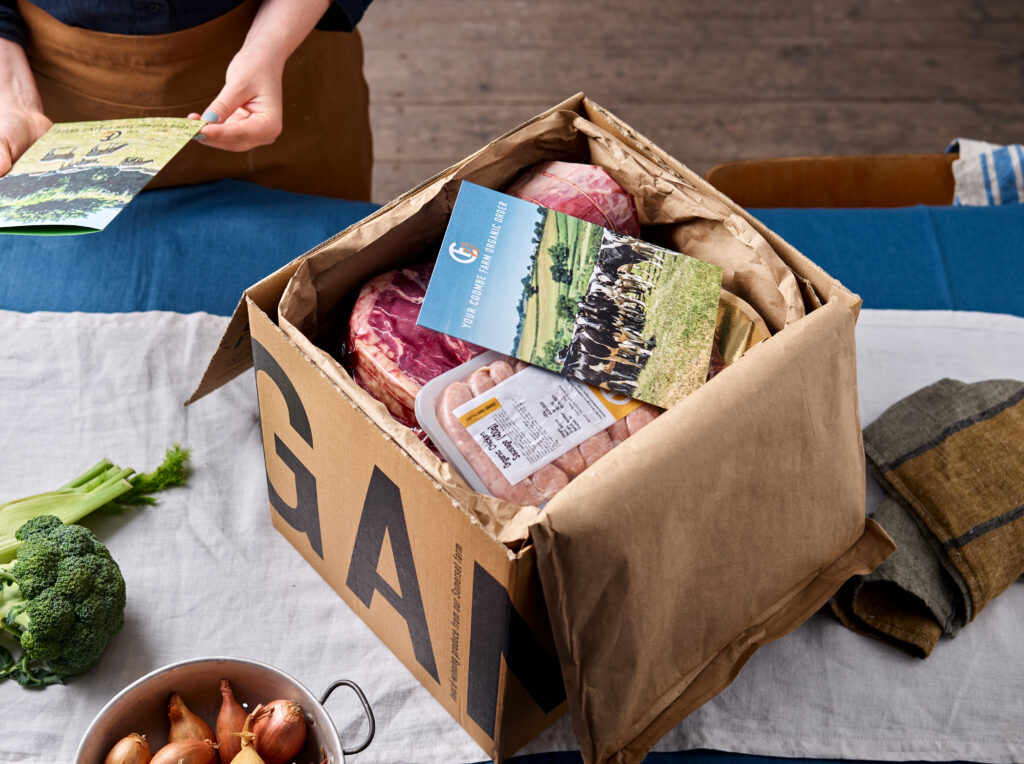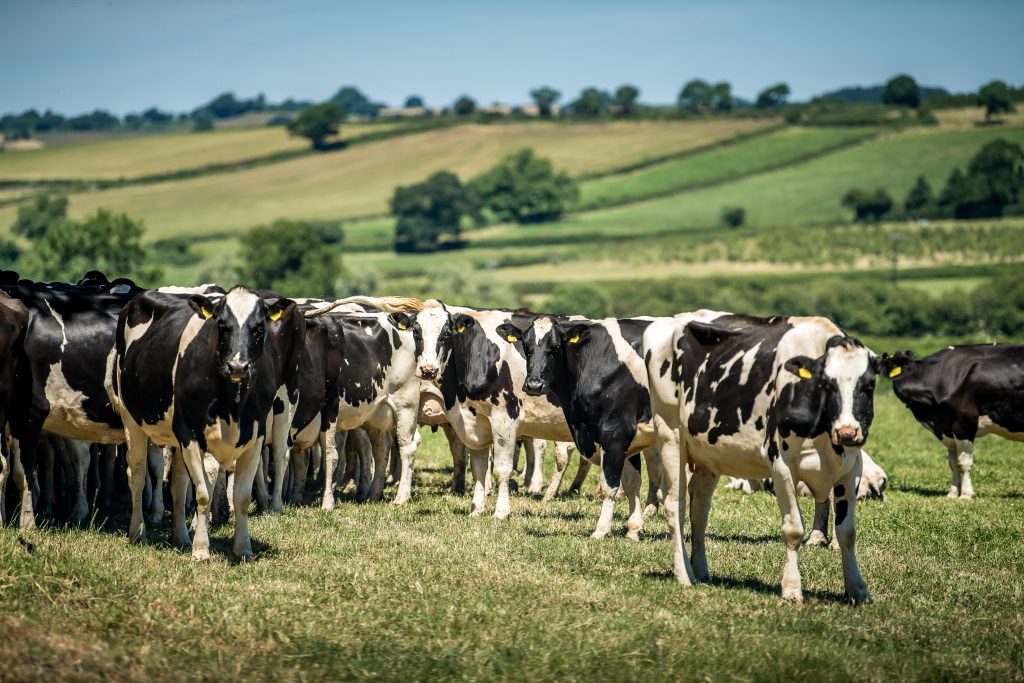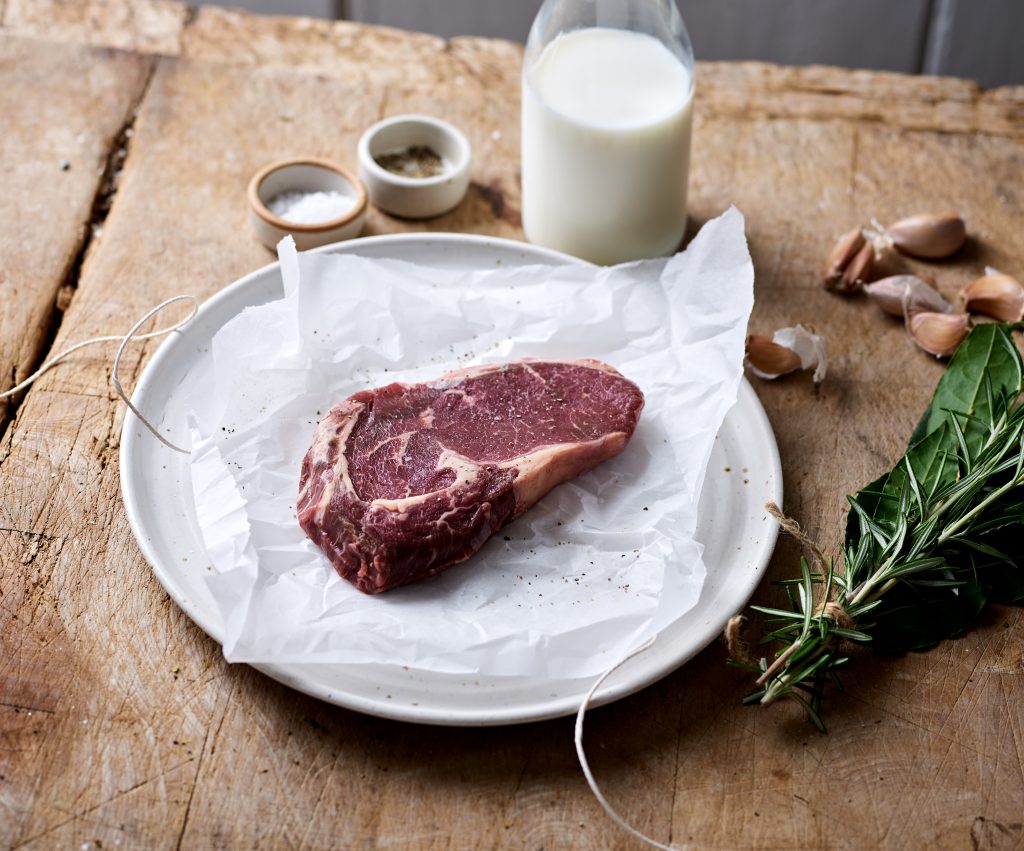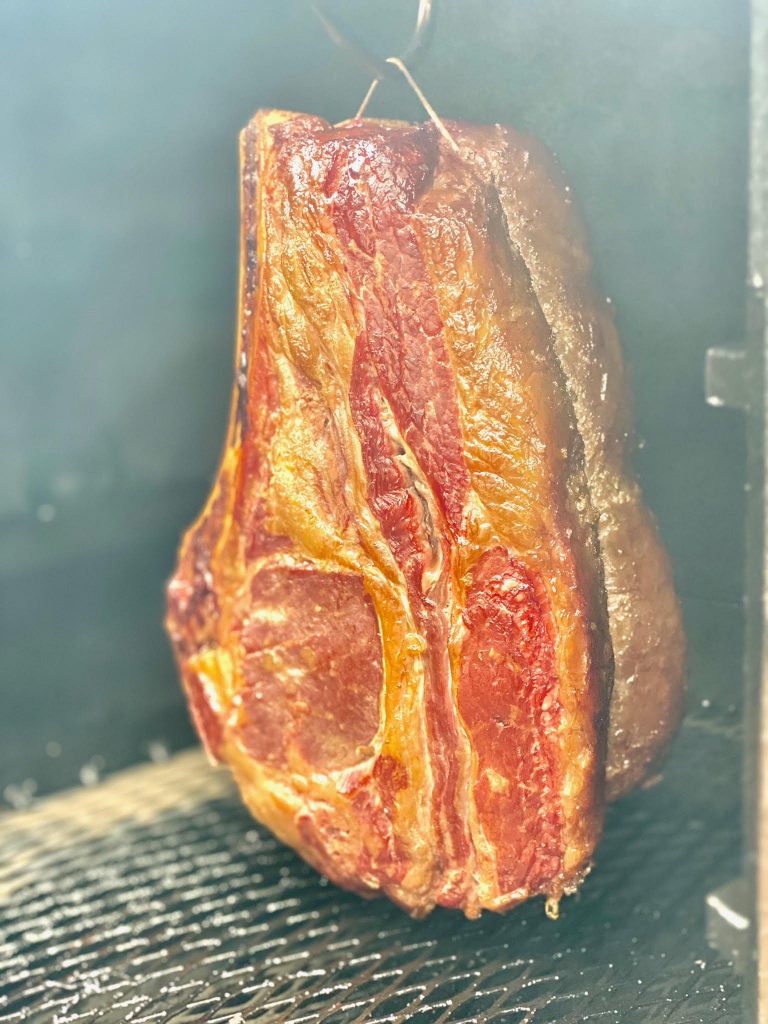Is there really any difference between organic chicken and non-organic chicken?
Written in collaboration with Coombe Farm Organic.
There’s a new trend of Retired Dairy Beef emerging in steak restaurants.
The talk is no longer only about how long the steak has been dry-aged (in Himalayan salt chambers, naturally). It’s also about how old the cow was. And, conversely to popular opinion, the older the better.
“Hell, it stands up to wagyu!” says executive chef of Caravan Restaurants, Matt Burgess. And Burgess should know, he did a taste test directly comparing retired dairy beef with wagyu with John Quilter The Food Busker – see video below.
Yes, you have to taste it to believe it. This is why most culinary movements are started in restaurants – the idea sold to you by enthusiastic servers and cooked by the professionals. They’re doing a stellar job – frying pans and ovens at home are also being fired up as the beef continues to rise in popularity.
So, what is Retired Dairy Beef exactly?
It’s a steak you may have come across by different names; the romantic-sounding ‘Old World Beef’, the exotic ‘Basque Beef’ if it’s imported from Spain, or the illustrative ‘Retired Dairy Beef’ if you’re ordering it to cook yourself, from Coombe Farm Organic.
Coombe Farm Organic farming manager Ryan Sloman-Brown says: “My boss always said to me the best tasting beef is from an older cow. Initially, I wasn’t convinced. But, you wouldn’t believe some of the marbling we get off our dairy cows.”
This isn’t some tough, old beef you have to slow cook. It’s a nurtured, premium beef product that we’re only just starting to fully appreciate in the UK.
Quilter calls retired dairy beef his ‘secret weapon’:
“People obsess about getting a really great flavor. If you think about the awful frankenstein beef you get in supermarkets that’s killed 18 months, while a retired dairy cow can be upwards of 10 years, it’s really exciting from a flavour point of view.
It’s an absolute game-changer. Instantly, your bolognese, stew or ragu are transformed in terms of taste.”
Coombe Farm Organic
Coombe Farm Organic offer an organic meat box delivery service, originally set up to sell beef as a by-product of their organic dairy business. It’s no surprise they are champions of Retired Dairy Beef and have a ‘head-to-hoof’ approach to production. Their Retired Dairy Beef has to be tasted to be believed.

Retired Dairy Beef: What is it?
Coombe Farm dates back to the 1940s, and has been an organic farm for the past 20 years.
Around 18 months ago they started to produce Retired Dairy Beef. This means when a cow is taken out of the dairy cycle – the oldest cow the herd is currently 12 years old – she is ‘retired’ and left to graze on pasture for anything from three months to a year, before being sent to the local abattoir and brought back to the on-farm butchery.

This gives the cow time to put on fat and muscle. It produces a steak of a darker colour, with pronounced flavouring and delicious marbling.
“It’s really changed the way we focus our energy,” says farmer Sloman-Brown. “It used to be all about the dairy, but now it’s about supporting a circular food system with minimal waste and full transparency.”
Retired Dairy Beef: Why is it gaining popularity now?
Sales of Retired Dairy Beef have increased by 155% across Coombe Farm Organic’s range over the last six months.
This type of steak has long been revered in the Basque region of Spain, particularly. So, why are we only just beginning to rediscover our appreciation for it, here?
Naturally, dairy beef has been always eaten here, too – once upon a time all cows were bred to produce both milk and beef.
But, with the industrialisation of farming and intensification of dairy farming, most cows are now bred to produce either good quality meat, such as Fresian or Norweigan Reds, or to produce huge quantities of milk, such as Holsteins. Holsteins have huge udders and don’t grow fat very easily, so when they are no longer producing enough milk they are unceremoniously slaughtered for hamburgers or pet food.
“It’s a waste,” says Sloman-Brown, who ensures his herds are cross-breeds.
Then there was the BSE crisis in the 1990s, the legacy of which means cows over 30 months old are still required to be butchered differently, with farmers incurring more paperwork and more expenses.
Retired Dairy Beef: The full story
But, premium Retired Dairy Beef is a beautiful product when the cow has been well cared for in a free-range system. Their meat is nicely marbled thanks to a lifetime of being out on organic clover-rich pasture and eating a predominantly grass-fed diet.

Dairy cows in conventional systems are typically pushed so hard they are often exhausted and taken out of the dairy system by the time they’re five years old. But, Coombe Farm Organic’s Retired Dairy Beef cows are up to 10 years old.
“It’s such a wholesome win-win. It’s good for the animal, for the land and your body,” says Quilter.
“Most people wouldn’t choose the industrialised food system if they knew the full story – and organic retired dairy cow is the full story.”
‘Organic’ is an extremely important caveat. This is not about extorting more value from an exploited dairy cow. It’s about farming in tune with nature and giving, as far as possible, the cow a life that’s worth living.
Retired Dairy Beef: what are the best cuts and how do you cook it
Farmer Ryan Sloman-Brown is a traditional steak and chips kinda-guy. He opts for the sirloin, because he says the fat keeps it moist and tender.
“These are not animals that are typically reared for beef so they require a little more attention to ensure they are finished to just the right confirmation,” explains Coombe Farm Organic general manager Lizzie Sloman-Brown.
“We hang the beef on the bone to allow the flavour to develop and the texture to tenderise but we believe the flavour to be unrivalled.”
Chef Burgess says the key to a good piece of beef from a retired dairy cow is to look for the marbling – the fat should have a slightly yellowish colour because of its age and because it’s been mainly pasture fed.

“It’s a different product to your normal steak – you need to be armed with that information and you have to cook it differently,” advises Quilter.
“Choose the thickest piece you can get – even better if it’s two portion steak. Cook it aggressively on high heat on the BBQ or in a pan to brown, then put in the oven on a medium-low temperature to slowly cook through until it’s medium-rare.
It’s got to be rested for a good 10 minutes. Then slice it and then pop it back on a high heat to keep warm before serving.”
Originally published in February 2021

